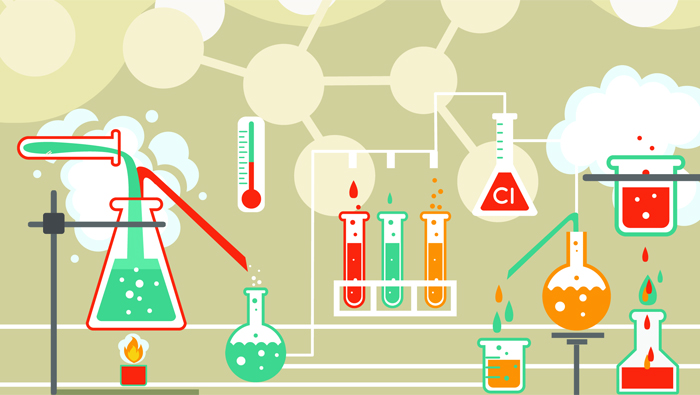
Chemical changes happen when two or more molecules interact to form something else. Chemical changes should not be confused with physical changes. If you melt sugar or an ice cube, it takes another form, but it is still sugar or water; that is a physical change. But when iron rusts, a chemical change called oxidation occurs, turning the iron (Fe) into iron oxide (Fe2O3). One way to know whether a chemical change has occurred is to ask: Has something new been produced? Is the reaction difficult to reverse? When an apple is sliced and left in the air, the flesh begins to turn brown. This is a permanent change in colour, and the reaction is also difficult to reverse. Thus, we can conclude that a chemical reaction has occurred.
Anatomy of a chemical equation
Chemists record chemical changes and reactions by combining symbols to create a chemical equation. For example, combustion is the process by which a material burns in air.
Lab safety
Many chemicals, alone or combined, can be hazardous or toxic. It is very important to follow these safety rules:
What you need:
A saucer, vinegar, salt, copper coins (pre-1982 pennies), paper towels
Steps:
1. Soak several layers of folded paper towels in vinegar and salt, and lay it on a saucer.
2. Place the pennies on the paper towels and leave them there.
3. Flip over the pennies every few hours and record your observations — continue for a full day or longer to get the best results.
Why it works
Copper and chlorine from the salt combine with oxygen from the air to produce a blue-green compound called malachite.
—[email protected]